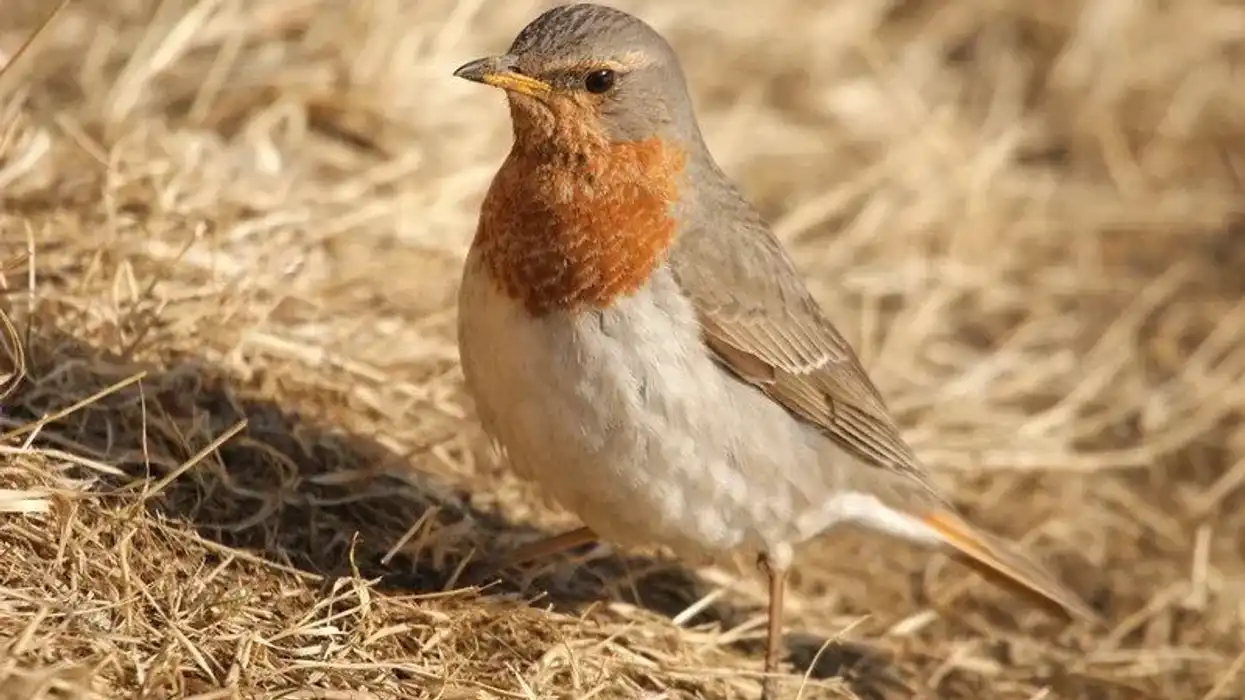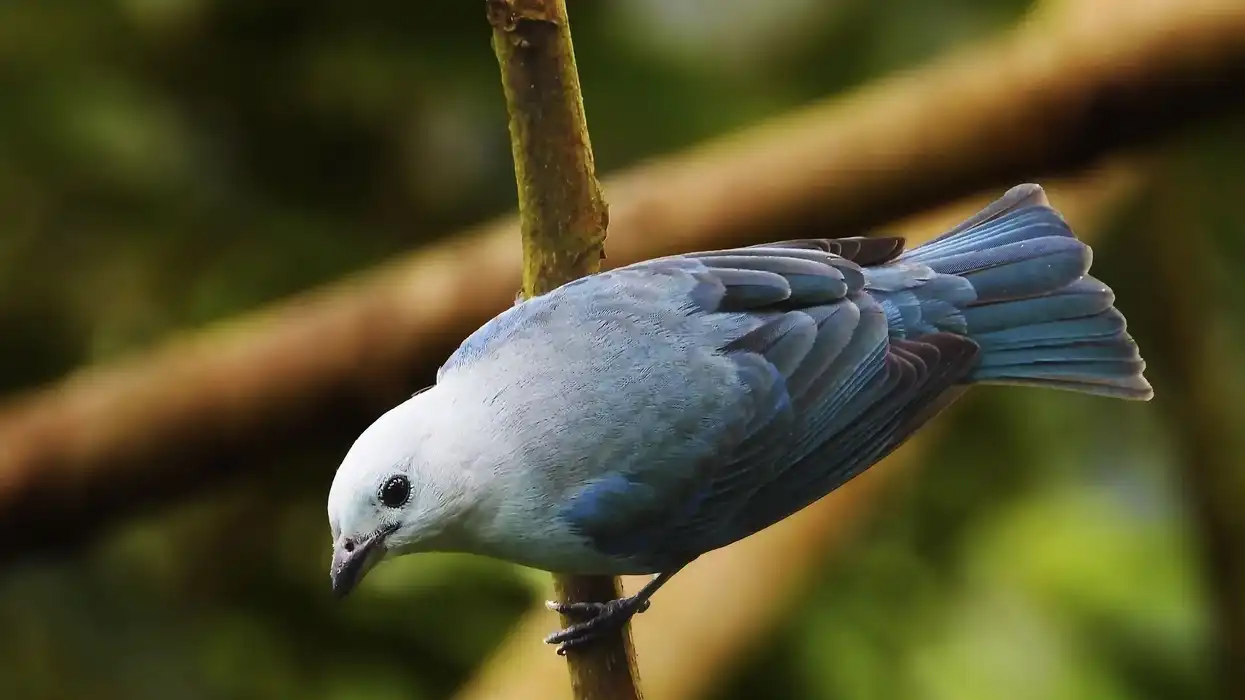This is one bird you won't have to look too hard to find! The white-throated magpie jay ranges from the Pacific coast of Mexico to Costa Rica.
The reason you will find this Pacific-dwelling species so fast is because they are loud. Yes!
Though there is no difference in the volume frequency of male vs. female white-throated magpie-jay in California, they, as a species, can be extremely loud.
Given the fact that they also congregate in groups most of the time, and therefore, can together even be louder. This gregarious species is known not just to be loud but also to be a bird that is mostly unafraid of humans.
In fact, they are so popularly spotted across their habitat that humans often leave out food and water for these birds specifically. You can easily recognize these birds with their deep blue color and white-colored throat, which earned them their names.
If you love reading about new animals and birds, check out frigate facts and blue jay facts.
White-Throated Magpie-Jay Interesting Facts
What type of animal is a white-throated magpie jay?
The white-throated magpie-jay, spotted along the Pacific coast of Mexico, is a type of bird.
What class of animal does a white-throated magpie jay belong to?
The white-throated magpie jays belong to class Aves.
How many white-throated magpie jays are there in the world?
Although white-throated magpie-jay (scientific name: Calocitta formosa) can be found throughout a wide area and have enormous populations, their population in the world is unknown. According to a 2011 estimate, there are approximately 8.7 million common ravens (belonging to the same magpie family) globally, but this number fluctuates year to year.
Where does a white-throated magpie jay live?
These species belong to the family Corvidae, which is life in the woods. These birds have a range that stretches from Mexico to Central America. They, therefore, can be encountered in Mexico and Costa Rica, El Salvador, and Nicaragua in Central America.
What is a white-throated magpie jay's habitat?
The white-throated magpie-jay can be found in various habitats, ranging from dry forests to semi-humid woods. It is uncommon in columnar cacti forests but frequent in thorn forests, gallery forests, deciduous woodland, forest borders, and cultivated places such as coffee plantations.
Who does white-throated magpie jays live with?
The white-throated magpie-jay lives in groups of five to ten in the wild. A social group is mostly made up of females who actively defend their areas against other social associations. Male species are tolerated significantly better by this group of female birds.
How long does a white-throated magpie jay live?
The white-throated magpie-jay is known to live for a long time. While no data on the lifetime of this bird was accessible, other corvid species have been known to live between 15-25 years. The azure-winged magpie species can survive up to 20 years in captivity, but only up to 15 years in the wild.
How do they reproduce?
The breeding season is from January-April, the white-throated magpie-jay. In a small group, the single female breeder is usually in charge of incubation and barely left the nest during the whole time. All through the incubation period, other female species give her nourishment. Outside the initial process of fertilizing the eggs, male birds have no important role in reproduction.
What is their conservation status?
The conservation status of the white-throated magpie-jay (family: Corvidae) and similar species, the white-necked raven, is of Least Concern according to the IUCN Red List.
White-Throated Magpie-Jay Fun Facts
What do white-throated magpie jays look like?

The species having a long tail and a crest of plumes on the head that is somewhat curled. Their crest is black, whereas the other two subspecies' crests have blue or white edges. The white-throated magpie-jay's face is white with a black crown with margin, producing a narrow band around the throat and a little drop underneath the eye.
In other subspecies, the black is less prominent. The mantle, wings, and tail appear blue, while the belly, breast, and bottom of the rump are white (having whitish margins on the tail).
The bill color is gray, as well as the eyes and legs, are black. Female birds have virtually the same plumage as male birds, except their tops are duller, their chests have a thinner band, and their tails are shorter.
How cute are they?
These blue-colored species range from Mexico's Pacific coasts to Costa Rica and look gorgeous with their long tail and curled crest feathers.
How do they communicate?
Central American bird white-throated magpie-jay species are highly vocal, making a variety of cries. Both mobbing cries and predator warnings consist of a harsh, boisterous call that fluctuates in length and frequency depending on the danger.
How big is a white-throated magpie jay?
The length range of white-throated magpie jay is about 17–22 in (43.1-55.8 cm). The length ranges Australian magpie is up to 14.5-17 in (36.8-43.1 cm). Therefore, the magpie jay species is bigger than the Australian magpie in length.
How fast can a white-throated magpie jay fly?
According to scientists, the white-throated needletail was once thought to be the fastest-flying bird in Central America. However, the white-throated magpie jay, when flying, can reach speeds of up to 105 mph (169 kph)!
How much does a white-throated magpie jay weigh?
The weight ranges up to 7.2–7.5 oz (204.1-212.6 g) of these throated magpie jay birds found in Southern Mexico and Costa Rica.
What are the male and female names of the species?
Male and female species of white-throated magpie-jay birds don't have any particular name.
What would you call a baby white-throated magpie jay?
A baby white-throated magpie-jay is called a chick.
What do they eat?
The omnivorous white-throated magpie-jay eats a diverse range of plants and animals stuff. Arthropods such as insects, including caterpillars, lizards, eggs, frogs, and hatchlings of other birds, grain, fruits, seeds, and nectar of balsa blossoms are all part of the diet.
Are they poisonous?
These species of magpie are large Central American birds spotted in Costa Rica and are not poisonous.
Would they make a good pet?
Magpie jays are enthralling, intelligent birds that should be maintained in a spacious, well-lit aviary rather than a cramped cage. With just a little time and dedication, these birds could become quite at ease with their caregiver. However, caution should be exercised before attempting to keep them as pets because these birds are violent and territorial.
Did you know...
The black-throated magpie-jay (C. colliei) hybridizes with the white-throated magpie-jay, forming a superspecies. However, the conventional race, which is only located in southern Mexico, C. f. azurea, distributed in southeastern Mexico, and C. f. pompata, which is spread from southeastern Mexico through Costa Rica, are the three recognized subspecies.
The magpie jay normally builds its nest in a prickly tree with a height of up to 100 ft (30.4 m). During the prolonged breeding season, which runs from November to July, this will protect predators. The mother bird will not leave the nest during the incubation stage as well.
Although male birds spread away beyond their natal areas a few years following fledging, this species does not engage in any migratory movements. This is also why it has not adapted to anything in particular over the years and continues to remain with a relatively similar body type as to what it had years ago.
What's the difference between a male and female white-throated magpie jay?
The tail length shows sexual dimorphism, as females having substantially shorter tails than males. Coloration distinguishes both sexes, with males having a narrower and mostly incomplete black band.
They likewise have partly white crests and only a small amount of black coloring above the eyes. On the other hand, the opposite sex has nearly all-black crests and black and white mottled coloring above the eye.
Are white-throated magpie jays endangered?
Magpie birds have ranges that stretch from Mexico to Central America. White-throated magpie-jay distribution ranges in Mexico and Costa Rica, El Salvador, Guatemala, Nicaragua, and Honduras in Central America. Because white-throated magpie-jays can be found throughout a wide range and have big populations, they are not considered to be endangered.
Here at Kidadl, we have carefully created lots of interesting family-friendly animal facts for everyone to discover! For more relatable content, check out these Amazon parrot facts and sanderling facts for kids.
You can even occupy yourself at home by coloring in one of our fwhite-throated magpie-jay coloring pages.










